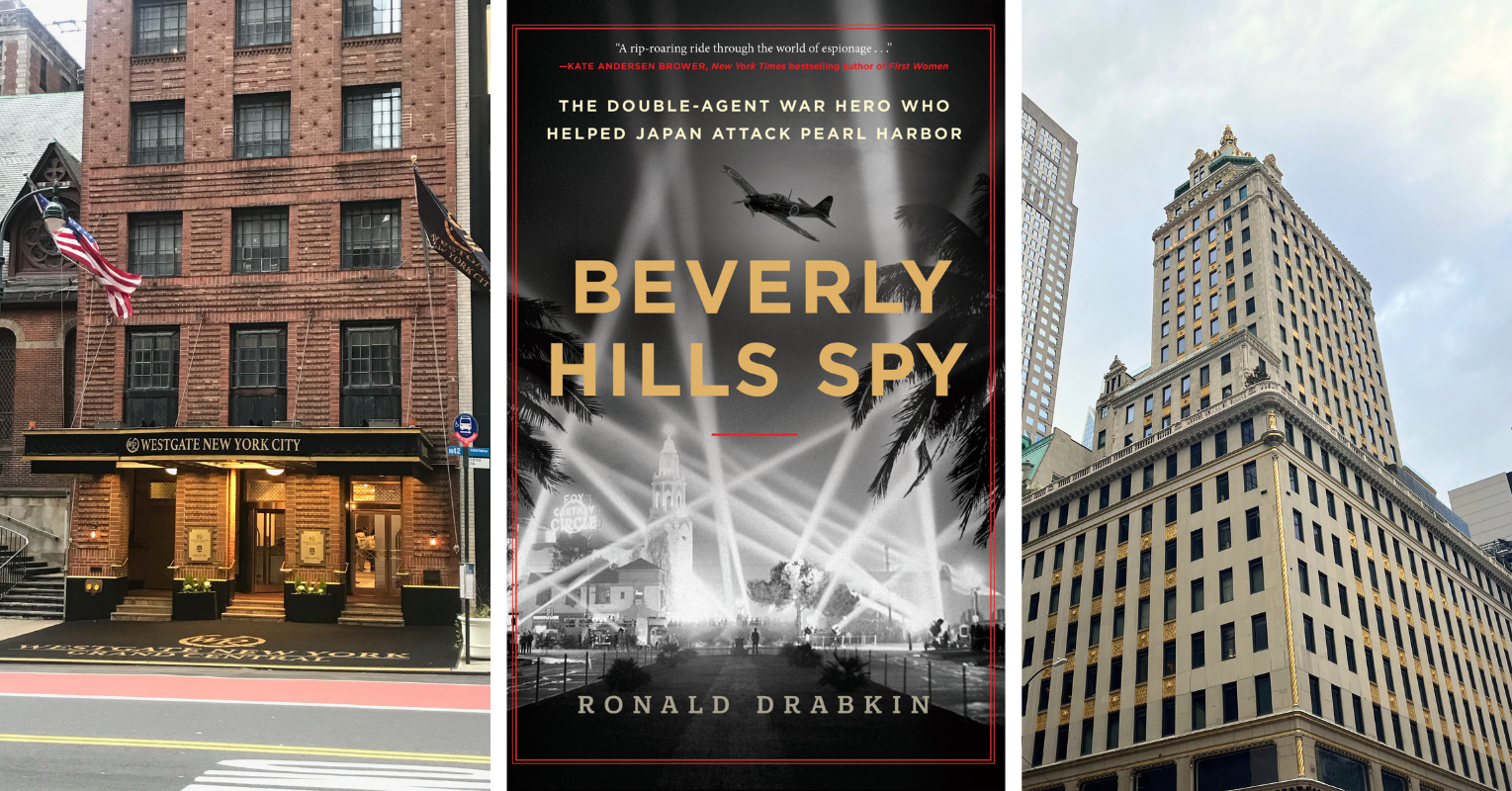The narrative nonfiction espionage book Beverly Hills Spy by Ronald Drabkin pulls readers into the world of real-life spy, Frederick Rutland. This untold tale of the World War I aviation hero turned double agent gives us a glimpse into Rutland’s fascinating life as a fixture of high society in Golden Age Hollywood and an ally to Japan. The book reveals how Rutland’s spy work enabled Japan to bomb Pearl Harbor, revealed through declassified FBI files and Japanese documents Drabkin was able to get a hold of. The story weaves in pivotal historical figures who had contact with Rutland—like Charlie Chaplin, Amelia Earhart, and others—and also offers a glimpse into Rutland’s missions in New York City and the East Coast of America. In this article, we’ll visit the New York City locations where Rutland lived, worked, and conducted covert missions!
Join us for a candlelit literary salon and launch party for Beverly Hills Spy this Wednesday, February 21st! Join us virtually via our Lit Salon livestream!
1. Cunard Whitestar Pier
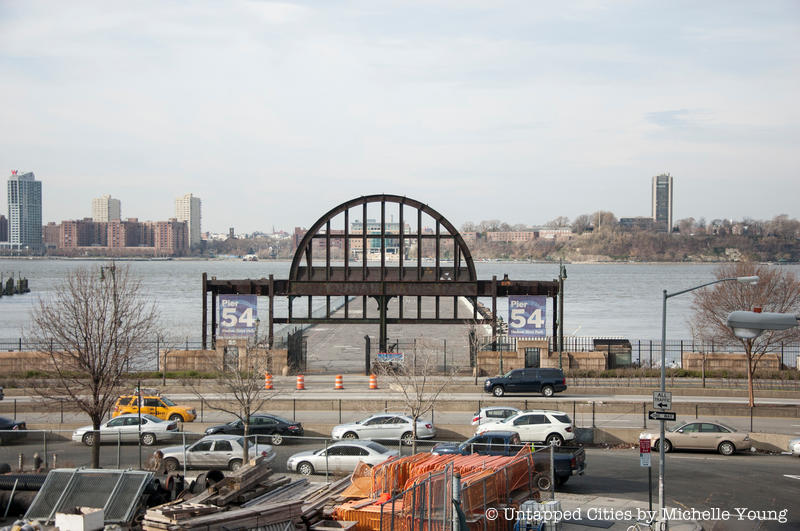
In the summer of 1933, Rutland was sent off to New York by a man named H.T.M Bell (also known as ‘Montague’). Rutland boarded the RMS Olympic with his family—his wife Dorothy and his two children David and Annabel—and Montague’s daughter, the nanny, Miss Bell. The RMS Olympic was a British luxury liner that was known as the Titanic’s sister ship. The Olympic traveled from Southhampton, England to New York, docking at White Star Pier 54. This was the same pier the Titanic was intended to dock at before it tragically sank on its maiden voyage.
Rutland would have arrived at a brand new Pier 54, which reopened in January 1933 following reconstruction after a fire the year before. The pier buildings were designed by Warren and Wetmore, the architects of Grand Central Terminal. After the White Star Line was discontinued, Pier 54 fell into disrepair. For many decades, only a rusting remnant of the Warren and Wetmore buildings remained. The pier was demolished and transformed into Little Island, a new park that opened in 2021. You can still find this remnant along the Hudson River at the entrance to Little Island.
2. Hotel Tudor
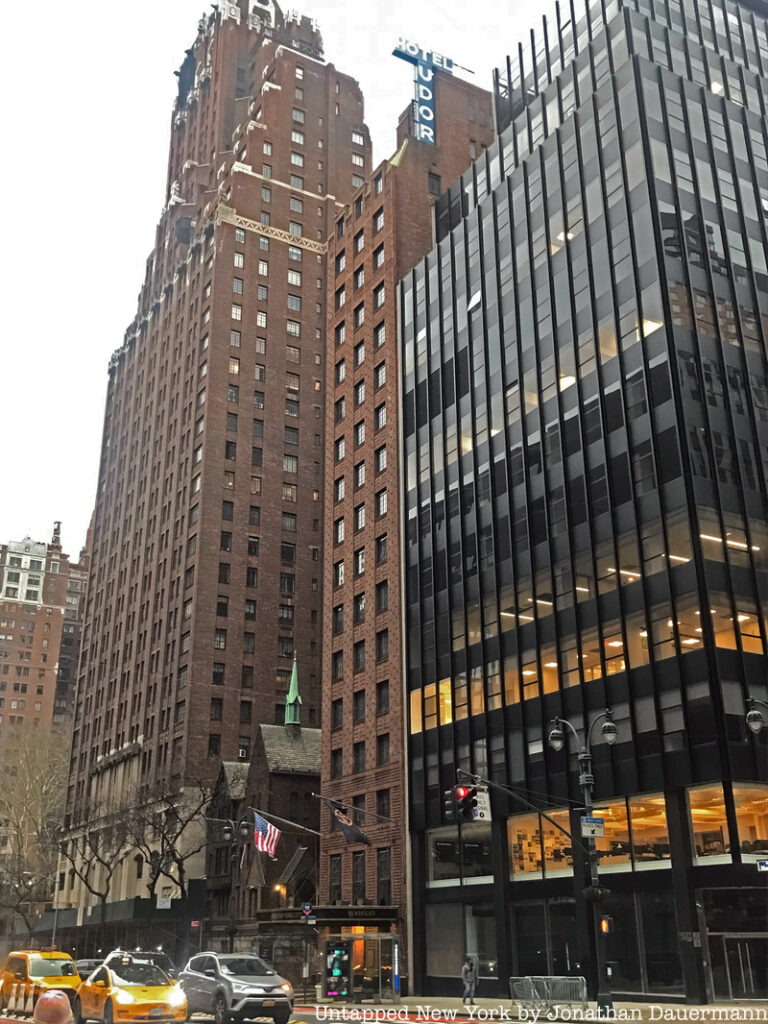
After arriving in New York in the RMS Olympic, Rutland and his family stayed at the Hotel Tudor, known today as Westgate New York City Hotel. At the time, in 1933, the complex was a newly opened hotel in Tudor City near Grand Central Terminal. Construction on the hotel started in 1927 and was completed in 1930. The brick-clad building is a historic 600-room hotel with 2,800 apartments. It was known for its stylish rooftop, private rooms with balconies, and its proximity to Grand Central Terminal and the United Nations.
Today, Westgate New York Grand Central— which has been renovated to a more modern flare—buzzes with hospitality and offers accommodations such as city view rooms, stunning public spaces, a bar and lounge as well as meeting space rooms. You can still see a sign at the top that says Hotel Tudor!
3. Brooklyn Navy Yard
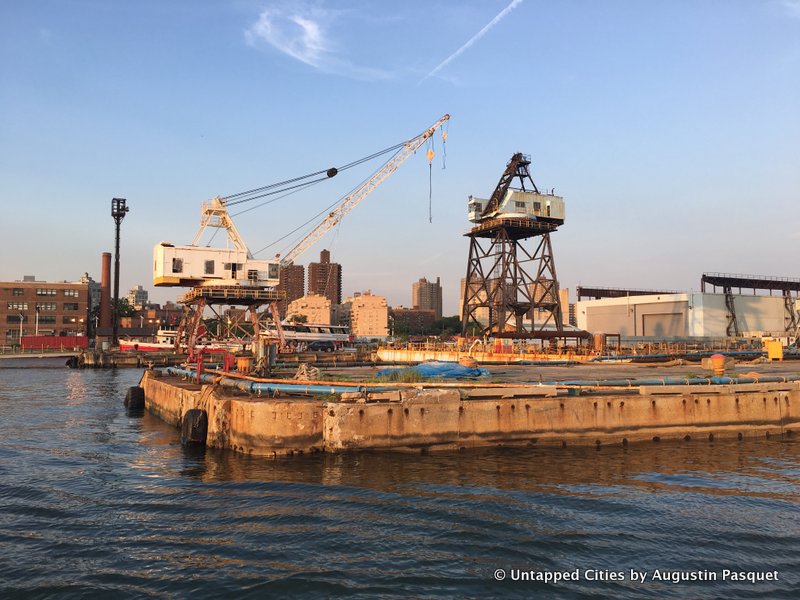
During his time in the States, Rutland spied at several Navy yards, including the Brooklyn Navy Yard, where he took pictures and notes for the Japanese Navy. Sitting in the heart of Brooklyn, the 300-acre yard was established in 1801 and launched the most famous fighting ships for over 150 years, becoming America’s top federal shipbuilding facility. During World War II, the Yard employed over 70,000 people, including women who worked as mechanics and technicians. The Yard was then decommissioned in 1966 after a freak accident that stained the Yard’s reputation. It was then sold to the city of New York. In the 1980s, the Brooklyn Navy Yard Development Corporation (BNYDC) was born, offering industrial enterprises a space to flourish. The industrial park now houses 40-plus buildings, docks, and active piers, and is home to different studios such as Malin Ericson Studio and NBC Studios.
4. Mikimoto Store
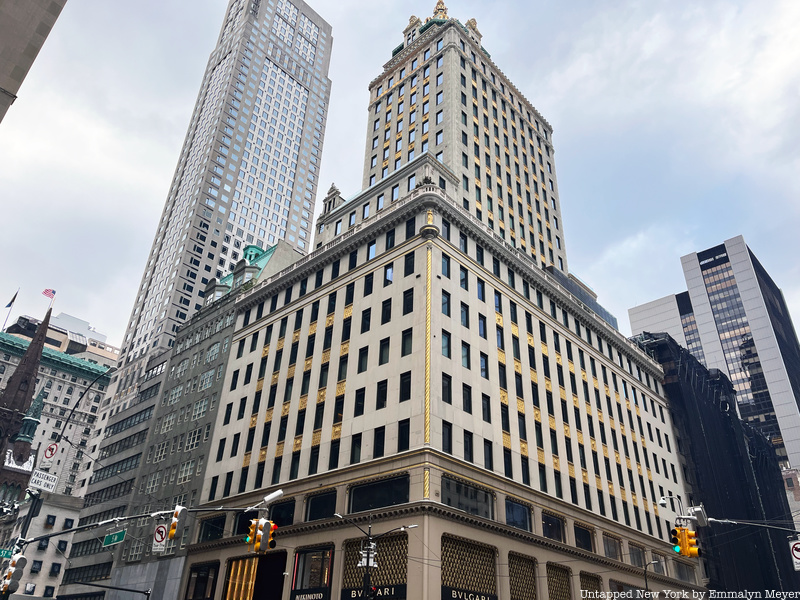
When Rutland arrived in New York, he was stopped by customs agents for importing unlicensed goods and pearls but was released after paying the required taxes on them. He attempted to enhance his gem smuggling operation by working with the Mikimoto Store on Fifth Avenue. Mikimoto is a luxury boutique that offers Japan’s finest jewelry, designed with aesthetics of Japanese heritage and inspired by aquatic pearls of the sea. The store was founded in 1893 by Kokichi Mikimoto. Coming in all shapes and sizes, the pearls used by Mikimoto are crafted with high quality and derived from different species of mollusks.
Drabkin tells Untapped New York that when Rutland was in New York, Mr. Mikimoto was working at the Fifth Avenue store, located inside the Art Deco Crown Building at 730 Fifth Avenue. In 2021, the store opened a new flagship location in the same building, just two storefronts away from the original. From New York, the Rutland family traveled to Los Angeles where Rutland’s double life and espionage missions continued. Hear more of Rutland’s story and author Ronald Drabkin’s own family ties to espionage at the Lit Salon!
Next, check out New Book Beverly Hills Spy in a WWI Hero Who Helped Japan Attack Pearl Harbor






